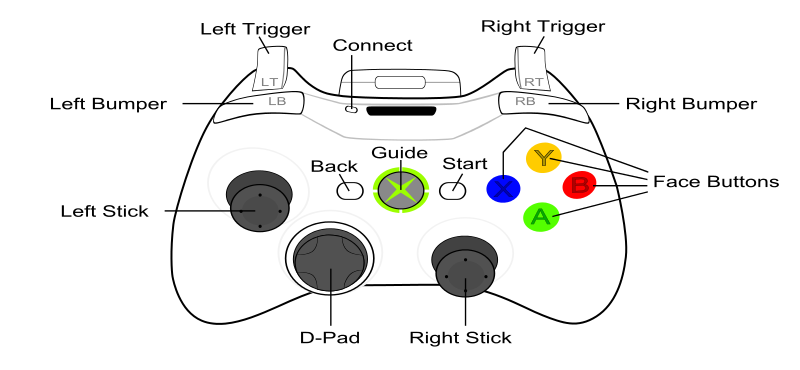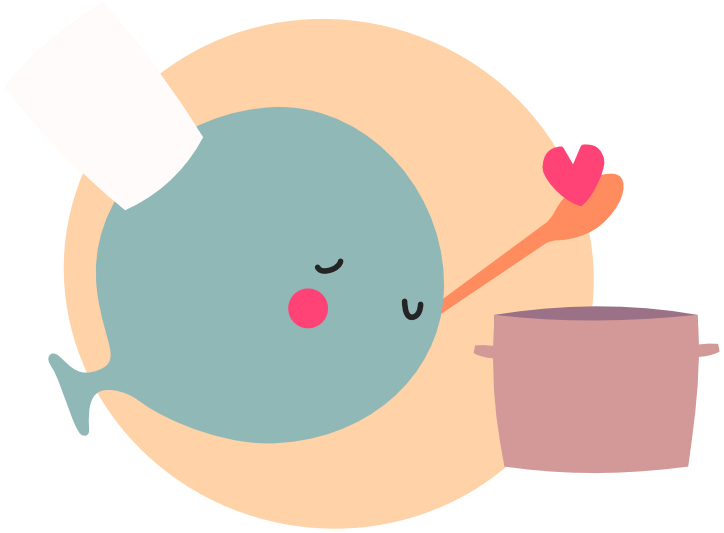Input
What is a game without some interaction? Good thing LÖVE's API has various functions regarding input.
Input can be separated into three categories:
- Keyboard
- Mouse
- Joystick
Keyboard #
With input we generally want to know three things:
- If a key is being held down
- The moment a key was pressed
- The moment a key was released
isDown #
To check if a key is being hold down we use love.keyboard.isDown(key).
local x = 0
function love.update()
if love.keyboard.isDown("right") then
x = x + 1
elseif x > 0 then
x = x - 1
end
end
function love.draw()
love.graphics.rectangle("fill", x, 50, 100, 100)
end
The function accepts multiple arguments, so you can check if any of a list of keys is down.
function love.update()
if love.keyboard.isDown("right", "d", "l") then
x = x + 1
elseif x > 0 then
x = x - 1
end
end
If we want to check if multiple keys are down at the same time we call the function twice and use and.
function love.update()
if love.keyboard.isDown("right") and love.keyboard.isDown("lshift") then
x = x + 1
elseif x > 0 then
x = x - 1
end
end
"lshift" in the example above refers to the left shift button. Check out the KeyConstant page for a list of all the keys.
pressed / released #
Pressing and releasing a key are events, and to capture such events we use a callback. In this case the callbacks love.keypressed and love.keyreleased.
local score = 0
function love.draw()
love.graphics.print(score, 42, 40)
end
function love.keypressed(key)
if key == "up" then
score = score + 1
end
end
function love.keyreleased(key)
if key == "down" then
score = score - 1
end
end
A problem with this is that our code can become very detached. What if deep inside our update function we want to know if a key was pressed? We can make a simple function to help with this.
Tip
You can also consider using an input library like baton.
local score = 0
local keysPressed = {}
local function wasPressed(key)
return keysPressed[key]
end
function love.update(dt)
if wasPressed("space") then
score = score + 1
end
-- Reset the list of pressed keys.
keysPressed = {}
end
function love.draw()
love.graphics.print(score, 42, 40)
end
function love.keypressed(key)
keysPressed[key] = true
end
textinput #
If you have a game where you can enter your name, it would be troublesome to use love.keypressed for it. You'd have to check if shift is being held down to decide whether the entered key is uppercase or not, for example.
Luckily, LÖVE also has the callback love.textinput. If the user used the combination that would type the dollar sign, then the text we get is the dollar sign.
local name = ""
function love.draw()
love.graphics.print("Your name: " .. name, 10, 40)
end
function love.textinput(text)
name = name .. text
end
function love.keypressed(key)
if key == "backspace" then
name = name:sub(0, -2)
end
end
Mouse #
The mouse input API is very similar to that of the keyboard:
But instead of a string, we pass a number:
1is the primary mouse button (probably left-click).2is the secondary mouse button (probably right-click)3is the middle mouse button.- Further buttons are mouse dependent (e.g. some mice have buttons on the side).
The mouse also has a position on the screen, which is passed along with the callbacks.
local circle = {
x = 100,
y = 100,
}
function love.draw()
love.graphics.circle("fill", circle.x, circle.y, 20)
end
function love.mousepressed(x, y, button)
if button == 1 then
circle.x = x
circle.y = y
end
end
We can also use love.mousemoved to get the new position each time the mouse moved, or love.mouse.getPosition to always get the current position of the mouse.
With the callback love.wheelmoved we capture the event of the mouse wheel being used. A positive value indicates upwards movement.
local radius = 10
function love.draw()
local x, y = love.mouse.getPosition()
love.graphics.circle("fill", x, y, radius)
end
function love.wheelmoved(x, y)
if y > 0 then
radius = radius + 3
elseif y < 0 then
radius = radius - 3
end
end
Joystick #
For controller input we use love.joystick. With the function love.joystick.getJoysticks() we get all the connected joysticks.
A joystick is any type of controller, like an Xbox controller or a PlayStation controller, but also a dance pad or a Wii Fit Balance Board. A standard controller, like the first two, are considered gamepads. These are joysticks who's buttons can be mapped to a common layout.

Note
Following the pattern in the image above, the A button refers to the bottom button of the four face buttons. This means that "a" refers to the X button on a PlayStation controller, and "x" refers to the square button. Check out the GamepadButton page for all gamepad buttons.
In this section we will focus on gamepads. We can check if a joystick is a gamepad by using Joystick:isGamepad().
Again, the gamepad input API follows a similar pattern:
If we want to check if player 2 is holding down the A button, we can use Joystick:getID() to check from which player the joystick is.
function love.update(dt)
local joysticks = love.joystick.getJoysticks()
for i=1, #joysticks do
local id = joystick[i]:getID()
if id == 2 then
if joystick:isGamepadDown("a") then -- If not a gamepad, it will return false.
print("Player 2 is holding down A!")
end
end
end
end
With love.gamepadpressed and love.gamepadreleased we get the joystick that pressed it, along with the pressed button.
function love.gamepadpressed(joystick, button)
print("Player " .. joystick:getID() .. " pressed the button " .. button)
end
function love.gamepadreleased(joystick, button)
print("Player " .. joystick:getID() .. " released the button " .. button)
end
Axes #
Besides buttons, a gamepad also has control sticks and triggers. These have more than a pressed/non-pressed state, as you can move the control stick slightly to the right, or hold down the right trigger halfway.
The axes can be accessed using Joystick:getGamepadAxis(axis).
The axis argument needs to be a string.
"leftx"- The x-axis of the left thumbstick."lefty"- The y-axis of the left thumbstick."rightx"- The x-axis of the right thumbstick."righty"- The y-axis of the right thumbstick."triggerleft"- Left analog trigger."triggerright"- Right analog trigger.
function love.update(dt)
local joysticks = love.joystick.getJoysticks()
local player1 = joysticks[1]
local x = player1:getGamepadAxis("leftx")
local y = player1:getGamepadAxis("lefty")
if x > 0.5 and y < 0.5 then
print("Holding the left control stick in the upper right corner.")
end
local rightTrigger = player1:getGamepadAxis("triggerright")
if rightTrigger > 0.3 then
print("Slightly holding down the right trigger")
end
end
Warning
With some controllers the control stick is never perfectly in the center. Take this into account when using axes, by using a threshold.
local x = player1:getGamepadAxis("rightx")
if x > 0 then
-- Value could be something like 0.01
print("Holding right apparently?")
end
if x > 0.2 then
print("Definitely holding right! (Though slightly)")
end
The change in axis also has a callback: love.gamepadaxis.
function love.gamepadaxis(joystick, axis, value)
if joystick:getID() == 3 then
if axis == "lefttrigger" then
if value > 0.5 then
print("The left trigger of player 3 is pressed halfway.")
end
end
end
end
Rumble #
Most modern controllers support rumble. We can set the rumble using Joystick:setVibration(left, right). You can set the vibration of the left and right motor seperately, but generally you'd want these to be the same.
function love.gamepadpressed(joystick, button)
if button == "a" then
joystick:setVibration(.5, .5) -- Vibrate on half strength.
end
if button == "b" then
joystick:setVibration(1, 1, 3) -- Vibrate on full strength for 3 seconds.
end
end
function love.gamepadreleased(joystick, button)
if button == "a" then
joystick:setVibration() -- Stop vibrating.
end
end

